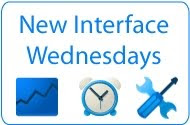We think sharing on the web can be even better -- that people might share more recommendations, more often, if they knew their advice would be used to help their friends and contacts right when they’re searching for relevant topics on Google. The +1 button is an easy way for users to recommend your content right from the search results pages. The +1 button doesn’t affect the AdSense ad units on your site, but it can improve the way your pages appear in Google search.
+1 is a simple idea. Let’s use Brian as an example. When Brian signs in to his Google Account and sees your site in the organic search results on Google (or search ads if you’re using AdWords), he can +1 it and recommend your page to the world.
 The next time Brian’s friend Mary is signed in and searching on Google and your page appears, she might see a personalized annotation letting her know that Brian +1’d it. So Brian’s +1 helps Mary decide that your site is worth checking out.
The next time Brian’s friend Mary is signed in and searching on Google and your page appears, she might see a personalized annotation letting her know that Brian +1’d it. So Brian’s +1 helps Mary decide that your site is worth checking out. We expect that personalized annotations will help sites stand out by helping users see when your Google search results are personally relevant to them. As a result, +1’s could increase both your quality and quantity of Google search traffic.
We expect that personalized annotations will help sites stand out by helping users see when your Google search results are personally relevant to them. As a result, +1’s could increase both your quality and quantity of Google search traffic.But the +1 button isn’t just for search results. We’re working on a +1 button that you can put on your pages too, making it easy for people to recommend your content on Google search without leaving your site. If you want to be notified when the +1 button is available for your site, you can sign up for email updates at our +1 webmaster site.
Over the coming weeks, we’ll add +1 buttons to search results and ads on Google.com. We’ll also start to look at +1’s as one of the many signals we use to determine a page’s relevance and ranking. For +1's, as with any new ranking signal, we'll be starting carefully and learning how those signals affect search quality over time. At first the +1 button will appear for English searches only on Google.com, but we’re working to add more languages in the future.
We’re excited about using +1’s to make search more personal, relevant and compelling. We hope you’re excited too! If you have questions about the +1 button and how it affects search on Google.com, you can check the Google Webmaster Central Help Center.













